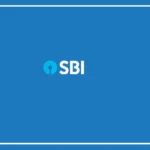In recent years, the number of people trading in Futures and Options (F&O) has grown rapidly.
That’s why it’s important for such traders to clearly understand the tax rules related to F&O profits and losses.
If you are involved in F&O trading, start calculating your profits and losses now. You’ll need to report them in your Income Tax Return (ITR).
The income and losses from April 1, 2024, to March 31, 2025, must be included in your return for the financial year 2024–25. The last date to file your ITR is usually July 31.
Tax rules on F&O losses are slightly tricky
The tax rules for profits from F&O trading are straightforward. But the rules for reporting losses are more complex.
According to Section 43(5) of the Income Tax Act, profits or losses from F&O trading are considered non-speculative business income.
This income must be reported under the “profits and gains from business or profession” category, and it is taxed as per your income tax slab.
What is intra-head set-off?
Intra-head set-off means adjusting losses within the same income category. F&O trading is treated as business income, so if you have a loss here, you can adjust it against profits from other business activities.
This does not include income from shares held as long-term or short-term investments or intra-day trading, which are taxed differently.
What is inter-head set-off?
Inter-head set-off means adjusting a loss from one category with income from a different category.
According to Section 71 of the Income Tax Act, losses from non-speculative business (like F&O trading) can be adjusted against most other income types—such as capital gains, interest income, or rental income. However, these losses cannot be set off against salary income.
Reporting F&O profits and losses is mandatory
With the rise in F&O trading, the Income Tax Department is keeping a closer watch.
That’s why it is important to report all profits and losses from F&O trading accurately in your tax return. Failing to do so may lead to a notice from the tax department.























